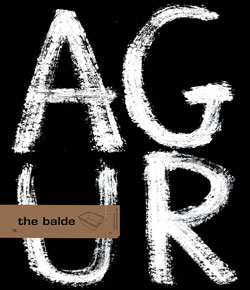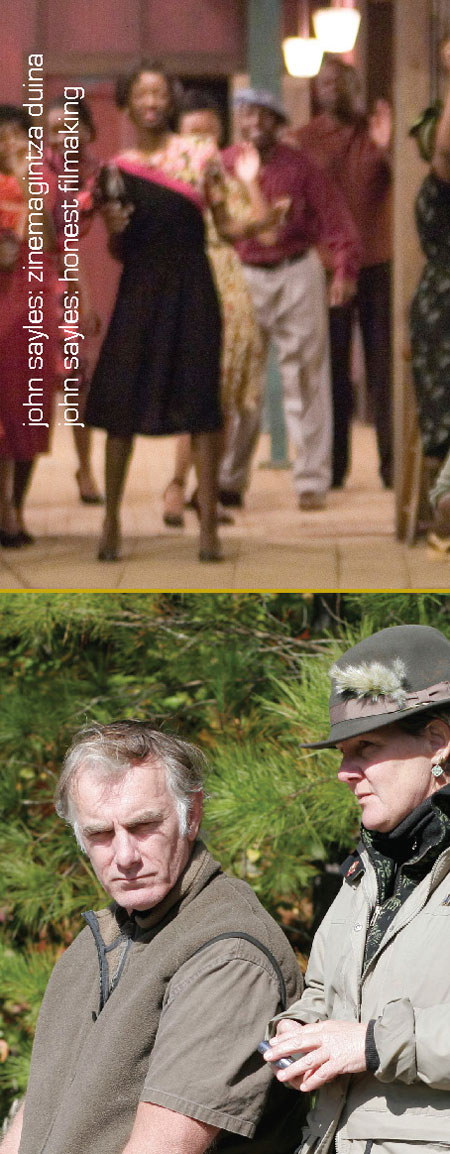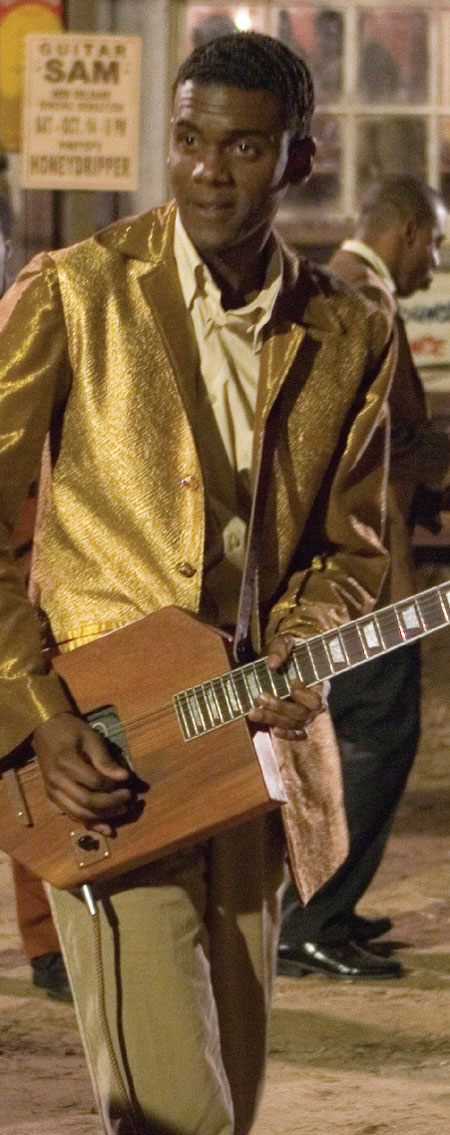john sayles: honest filmaking
The type of guy all girls’ mothers like. He looks like a country boy; broad-shouldered, arms the thickness of tree branches, rosy cheeks and two rows of perfect teeth. Not only does he look nice, he is nice. He’s been to the International San Sebastian Film Festival on many occasions. In 1994, the festival offered a retrospect of his work, maybe a little prematurely seeing the amazing body of work he’s created since then. John Sayles was born in the town of Schenectady in the State of New York in 1950. He started off writing short stories and narratives. In 1975, he won the National Critics Circle Award and the National Book Award for the novel Union Dudes. As was the case with Martin Scorcese and James Cameron, he was introduced to the world of cinema by Roger Corman. He wrote the scripts to many action and terror films (Piranhas...) and with the money he made from these films, he made his own first offering, Return of the Secaucus Seven (1980.) He directed Lianna three years later, a beautiful story of a married woman who falls in love with another woman. Nowadays, Sayles, in order to pay for his films, works as a ‘script doctor’ on some Hollywood productions. He has been contracted to round off the scripts on films like Apollo XIII, Mimic and Jurassic Park, to name but a few.
In Sayles films, communities and the clash between communities take priority over individual characters. This point of view has tsaken him to many different locations throughout the world: Louisiana Passion Fish (1992), Ireland The Secret of Roan Inish (1994), Texas for Lone Star (1996), Central America Hombres Armados (1997) and Alaska Limbo (1999). He has presented his last film Honeydrippers (2007) at this year’s San Sebastian International Film Festival. A community in Alabama takes centre stage this time round. Sayles cinema is committed and ethical but it doesn’t morally judge the characters who appear therein. He doesn’t act the way many filmmakers do; all-knowing and the font of whatever doctrine. John Sayles has been getting around quite a bit in the film festival – he’s here and there and everywhere. As an independent director and producer, he has to exchange the glamour for quite a lot of hard work. He and his films’ producer and partner of the last thirty years Maggie Renzi, have been running around signing distribution contracts over the last few days (let’s hope we’re in luck and we get to see Honeydrippers on the big screen at cinemas over here – we haven’t been so lucky with some of his other films in the past.) The couple seem optimistic but they can’t confirm one hundred per cent that we’ll be able to see the film over here just yet. We made the most of our opportunity to ask a few questions.
What does ‘Honeydrippers’ tell us?
It’s set on a cotton farm in Alabama in the 1950s. Before the Korean War. Honeydripper is the name of a music club or hall on the side of a road. The old house piano player takes on a young musician in order to be able to pay the rent. This young musician turns up with a strange guitar he’s made himself, a homemade electric guitar… I think I’ve told you too much already...
Is it easier to make independent cinema today?
I’d say it’s the opposite. It’s easier to grab a camera and shot a film, but for those of us who understand cinema as a job, a production that demands a work team, a film that’s gonna cost more than a million dollars to make is harder to get the financing now than it was before.
How would you define independent cinema?
The same old definition as always. The director is the one who tells the story, chooses the actors and who is responsible for the final cut.
What do you miss in current cinema?
Better journalism. More mature independent filmmakers. More women making films. Imaginative distributors...
While some so-called stars – who some people judge essential – get huge sums of money for merely attending, independent filmmakers, those with their own enriching vision of things, are hard at work at the International San Sebastian Film Festival.
In Sayles films, communities and the clash between communities take priority over individual characters. This point of view has tsaken him to many different locations throughout the world: Louisiana Passion Fish (1992), Ireland The Secret of Roan Inish (1994), Texas for Lone Star (1996), Central America Hombres Armados (1997) and Alaska Limbo (1999). He has presented his last film Honeydrippers (2007) at this year’s San Sebastian International Film Festival. A community in Alabama takes centre stage this time round. Sayles cinema is committed and ethical but it doesn’t morally judge the characters who appear therein. He doesn’t act the way many filmmakers do; all-knowing and the font of whatever doctrine. John Sayles has been getting around quite a bit in the film festival – he’s here and there and everywhere. As an independent director and producer, he has to exchange the glamour for quite a lot of hard work. He and his films’ producer and partner of the last thirty years Maggie Renzi, have been running around signing distribution contracts over the last few days (let’s hope we’re in luck and we get to see Honeydrippers on the big screen at cinemas over here – we haven’t been so lucky with some of his other films in the past.) The couple seem optimistic but they can’t confirm one hundred per cent that we’ll be able to see the film over here just yet. We made the most of our opportunity to ask a few questions.
What does ‘Honeydrippers’ tell us?
It’s set on a cotton farm in Alabama in the 1950s. Before the Korean War. Honeydripper is the name of a music club or hall on the side of a road. The old house piano player takes on a young musician in order to be able to pay the rent. This young musician turns up with a strange guitar he’s made himself, a homemade electric guitar… I think I’ve told you too much already...
Is it easier to make independent cinema today?
I’d say it’s the opposite. It’s easier to grab a camera and shot a film, but for those of us who understand cinema as a job, a production that demands a work team, a film that’s gonna cost more than a million dollars to make is harder to get the financing now than it was before.
How would you define independent cinema?
The same old definition as always. The director is the one who tells the story, chooses the actors and who is responsible for the final cut.
What do you miss in current cinema?
Better journalism. More mature independent filmmakers. More women making films. Imaginative distributors...
While some so-called stars – who some people judge essential – get huge sums of money for merely attending, independent filmmakers, those with their own enriching vision of things, are hard at work at the International San Sebastian Film Festival.




